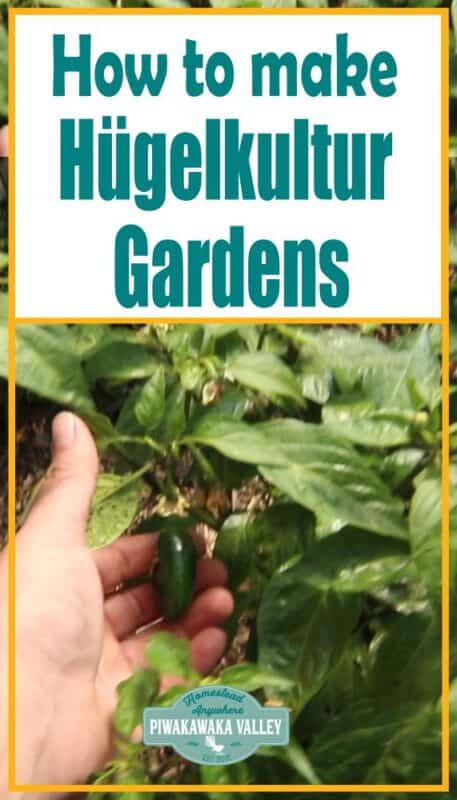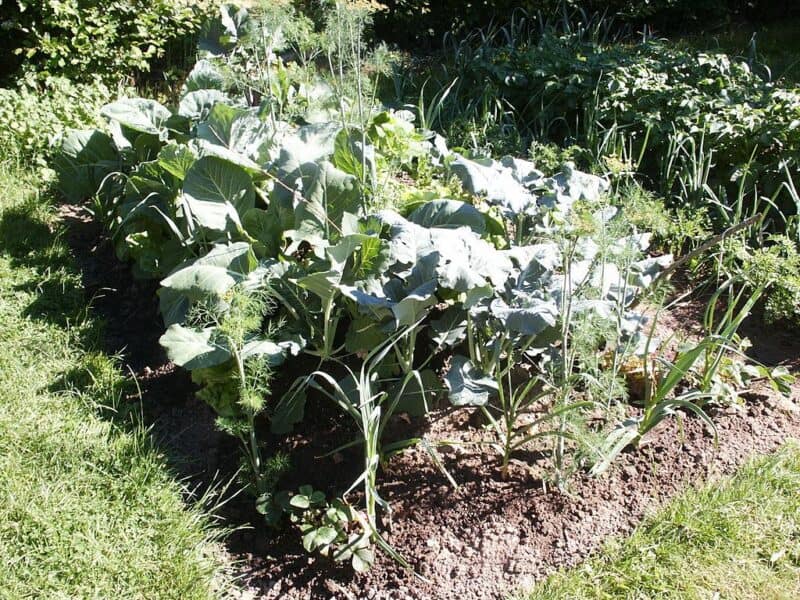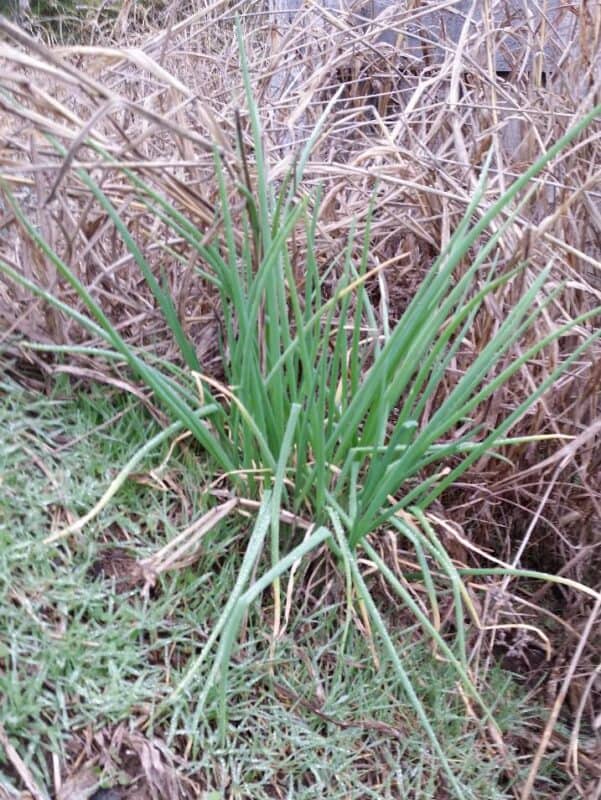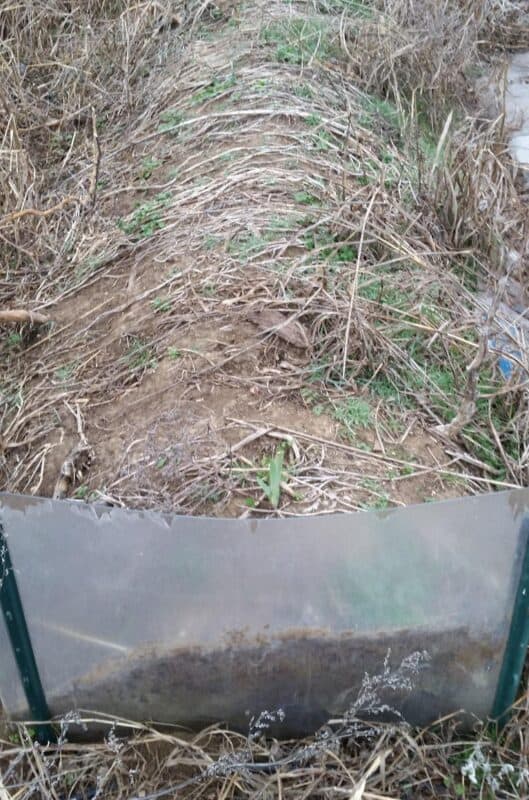This post was most recently updated on March 10th, 2021
Hügelkultur is an ancient concept of growing a garden on decomposing logs and other organic material. Today’s blog post is a guest post by Sarah Jay of the Plant People Podcast and it is all about how to build hügelkultur in your garden.
Please read: This information is provided for educational purposes only and is not intended to treat, diagnose or prevent any disease. We encourage you to make your own health care decisions in partnership with a qualified health care professional.
This post contains affiliate links, this means at no extra cost to you, we make a commission from sales. Please read our Disclosure Statement
Permaculture gardening is one of the most eco-friendly ways to work with the earth. As the adage goes, a garden that thrives on laziness is a good garden. And permaculture has proven that saying true time and time again. New and varied methods of gardening within the principles of permaculture are constantly emerging.
But what of the older ways?
In this post, we will discuss the method of building Hügelkultur, a technique used for hundreds of years. Popularized in 1962 via German gardeners and authors, Herrman Andrä and Hans Beba, the term translates from German to the English term “Mound Culture”. It is a pile of brown (dead leaves, wood, and dried hay or straw) and green matter (compost, peat matter, or kitchen and garden scraps) that acts as a planting medium for almost any kind of garden. It can also be used to improve soil that needs a little love before planting takes place.
Organized in the correct manner, Hügelkultur gives gardeners a more efficient and less impactful way to grow.
Hügelkultur in full force, Maseltov, CC BY-SA 4.0 https://creativecommons.org/licenses/by-sa/4.0, via Wikimedia Commons
Why Build a Hügelkultur?
According to Hügelkultur.com, the benefits of building Hügelkultur are as follows:
- It’s cheap and easy: materials are found on or near your home.
- Hügelkultur provides gardens with improved water efficiency: especially beneficial when gardening in drought prone climates. This has to do with the tall curve of the garden. Watering from the top allows irrigation to run down the sides of the hugel, and soak in as it goes.
- There is no need to turn or till the soil, which protects the microbiome present there. This style of gardening also minimizes weeding.
- This process is great for using up rotting wood, twigs, branches, and even whole trees that would otherwise go to the dump or be burned. They form the base of your hugel.
- Gardeners experience an extended growing season due to the heat generated by the composting wood at the core of the mound.
- Hugels provide increased surface area due to their vertical design: approximately 1.5 – 2 times as much growing area, depending on the height of the mounds you build.
- Excellent drainage and conditions for most plants, again due to height.
- Working with the soil in this way creates healthy microclimates. This has to do with the sun trap on the northern/sun side, and the shaded on the other side.
- Building a hugel provides an excellent environment for worms, mycelium, and other soil microbes.
So, if you are looking for a permaculture gardening technique that has a proven record (hundreds of years) of success, mimics the ecology of the environment where you live, and cuts down on resource use throughout the entire life cycle of growth, look no further.
A happy onion still thriving in a broken down hugel in the middle of winter.
Types of Hügelkultur Gardens
There are several different types of hugel (mounds), that are suited to different environmental situations.
Traditional: uses the basic hugel structure that is built up from the ground into a mound.
Sunken: built from a hole in the ground, where the top of the hugel is level with the ground above.
Hybrid: part sunken, part traditional. Built partway in the ground with a mound rising above the surface of the earth.
Example of a hybrid Hugel, Unknown author, CC BY-SA 2.5 https://creativecommons.org/licenses/by-sa/2.5, via Wikimedia Commons
Stack: multiple sunken hugels placed next to one another in the ground.
The Process of Building a Hügelkultur Bed
In this post, we will look at the parts of and how to build a traditional Hügelkultur. The same principles can be applied to the other formats, with varying ground preparation beforehand. All Hügelkultur involves the same parts, so applying the basics to differing formats for your purposes should be no problem at all.
Plot out your Hügelkultur.
Find an area to build the mound. The area should have enough free space for at least a few feet long and a few feet wide. Hugels can be much larger than that, however, so use the amount of material you have collected combined with your growing needs to determine how large the mound will be.
The most important thing to note is that you have enough material to create a mound at least three feet tall, which is the optimal height for a Hügelkultur. The area you build the mound should get adequate sunlight for growth, and ideally be on level ground.
If you find the ground is not so level where you plan to build the hugel, you can dig a small ditch into the soil, and start from level ground below the surface.
Lay a pile of branches.
Begin by piling branches large enough to create a small base for your mound. The best way to go about building the base is to first arrange larger branches at the bottom of the mound and build up smaller branches around the larger ones.
The purpose of the branches is to provide the garden with the same nutrients it would have in a setting like a forest floor. The way branches fall to the earth and decay to enrich the forest soil is simulated in Hugel-building. Try pulling from the surrounding environment.
Some tree woods resist decay (like pine, and cedar) and naturally have a more acidic content. It may be worth avoiding those as many plants require more loamy alkaline soil to thrive. And some plants produce a lot of acid content from their roots, and do not need extra acid content already present in the soil.
Compact the pile.
Use either your feet or a garden tool like a shovel or tamper to compact the large and small branches down. This quickens the process of decomposition that provides nutrients for the plants at the top of the hugel.
When the wood breaks down, beneficial fungi spores that live in the trees where you sourced your bottom layer become a part of the process and add benefit to your garden buy supporting the biome present in your hugel.
Cover the woody material with mulched green prunings, grass clippings, sod or straw. Sprinkle a thin layer of compost on top of those.
This layer simply needs to cover the wood pile. However, if you have a lot of green matter, adding more than a thin layer does not hurt the process of decomposition.
If you are using sod, make sure it is turned upside down to prevent further grass from taking over your hugel. Placing sod grass down smothers the grow of the grass present in the sod. This layer of your hugel works with the wood to support a healthy diverse system of growth.
Essential garden nutrients like Nitrogen come from compost and help to improve the process of root-fixing in plants that have yet to be established.
Cover the whole mound with a thin layer of soil.
This is the top layer where planting takes place, so use rich soil from your pre-existing garden or source soil from your locality. Again, keeping your local ecology in mind helps prevent soil erosion which has a direct impact on life subsisting where you live. Using local materials helps birds, bugs, plants, all life that exists there remain.
Wait.
Give it a few days for the composting process to begin. Once you notice the bed height decreasing, you know. It has begun!
A side view of a finished Hügelkultur, Kiss Veronika, CC BY-SA 4.0, https://creativecommons.org/licenses/by-sa/4.0, via Wikimedia Commons
Planting out on a Hügelkultur Garden
Since the hugel will not be the most ideal for planting at first as the materials have not had adequate time to break down, use extra compost to help with the process of planting.
At this point, you can plant starts, seeds, or simply let the mound do its work and benefit the soil. If planting and growing seeds or starts is what you would like to do, dig a small hole and add some compost.
Then plant seeds and/or starts and water well. Monitor the new plants to ensure they take the hugel, and that they are getting enough sun and water to thrive.
Maintenance for a Hügelkultur Garden Bed
Now you can enjoy the benefits of gardening in healthy soil without the need for excess water or tilling. Hugels do not need a lot of maintenance and they need less water to support life.
They will break completely down after a time, but what remains is more healthy soil. If you are rotating crops which helps to prevent soil exhaustion, the hugel should continue to support plant life time and again. Happy Hugeling!
Example of how a Hügelkultur looks after it has broken down over time.
If you like tips on frugal living, self sufficiency and consuming less, sign up to our newsletter below, I would LOVE to have you
For further reading, I also recommend all of these books. I own every one of them and they are amazing resources!



































